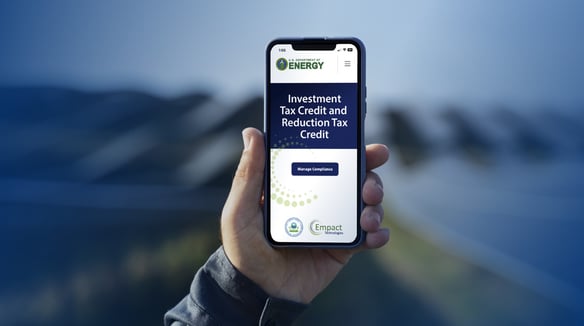Infocast Conference Recap of Tax Incentives 2023:Optimizing Post-IRA Opportunities


With an expected $1.2 trillion in Inflation Reduction Act (IRA) incentives on the table, clean energy stakeholders have unprecedented opportunities ahead, yet they also face a whole new set of compliance mandates. The question: “how can I comply with incentive requirements for the IRA?” came up over and over again at Infocast’s Tax Incentives 2023: Optimizing Post-IRA Opportunities conference from October 4-5 in Houston.
The positive energy was palpable. The conference brought together utility-scale developers, investors, and IRA-focused attorneys and accountants - an assembly of some of the country’s brightest minds and most informed collaborators in IRA projects. The more the conversation flowed, the more everyone collectively realized the scope of the risks and uncertainties inherent in the IRA legislation. Here are three key conference takeaways, with steps to address IRA compliance:
1. Understand the risks of non-compliance: Since IRA legislation is relatively new, and tax equity transactions are just starting to be announced, it's too early to see any IRS recapture audit impact from non-compliance. As part of the IRA, the IRS is hiring 80,000 new staff members over the next several years who will be focused on tax compliance, so it’s crucial to put safeguards in place to prevent future audits and associated impact. Developers and tax equity investors will need to rely on a multi-level risk management strategy that incorporates internal compliance programs, compliance management systems, EPC agreements and management along with tax equity insurance.
2. Have a compliance system in place from the beginning: It was a pleasure to participate on a panel entitled Mitigating Tax Risks: Insuring Tax Equity Investments, Credit Enhancements & Other Tax Credit Monetization Strategies, moderated by Gabrielle Jacques of Norton Rose Fulbright US LLP, and alongside Daniel Berger, Senior Vice President, Head of Tax Insurance at Lockton Companies, and Jordan Tamchin, Senior Vice President, Practice Leader, CAC specialty.
The session was focused on using insurance for IRA-related risk. When the panel was first announced, the only tax equity risk management option was tax equity insurance. Subsequently, I launched Empact to complement tax equity insurance as an additional component of a risk management strategy. Just as today’s homeowner insurance policies require protection systems like smoke detectors and burglar alarms, tax equity insurance will require developers to have active compliance management systems in place to reduce non-compliance risk as well.
Empact supports developers and tax equity investors with a system to maximize IRA incentives. Because it’s the first platform on the market to manage full IRA e-compliance, I received quite a few questions on prevailing wage and apprenticeship compliance as well as domestic content compliance issues.
3. Understand who carries the risks: Looking at a full spectrum of risks is key to de-risking. For example, an EPC is responsible for paying on-site construction personnel and therefore is also responsible for meeting prevailing wage and apprenticeship requirements. Still, if these requirements aren’t met, it’s the tax equity investor who would fail an IRS audit and be responsible for any penalties and the loss of the tax credit. As insurance companies begin writing more IRA-related policies, they are going to be looking closely at how project partners are managing risk from end to end.
IRA legislation is accelerating the clean energy transition. By establishing a multi-layered risk management strategy - including a system to manage, document, and monitor adherence to compliance requirements - stakeholders can optimize IRA opportunities while supporting our clean energy future.